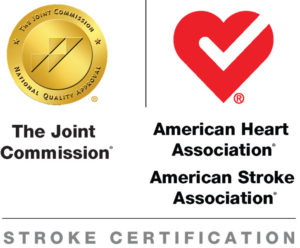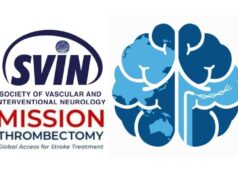
The Joint Commission, in collaboration with the American Heart Association/American Stroke Association, the world’s leading voluntary health organisation devoted to fighting cardiovascular disease and stroke, now offers a thrombectomy-capable stroke centre (TSC) certification program. This new level of stroke certification identifies hospitals that meet rigorous standards for performing mechanical endovascular thrombectomy (EVT), a surgical procedure used to remove blood clots in patients who suffer from large vessel occlusive (LVO) ischemic strokes.
This is the fourth level of stroke centre certification offered by The Joint Commission and the American Heart Association/American Stroke Association; additional certifications include acute stroke ready, primary stroke and comprehensive stroke.
“Because of their higher level of care, hospitals certified as comprehensive stroke centres by The Joint Commission or another national organisation are the preferred location for transporting patients with suspected LVO strokes,” said David Baker, executive vice president for Health Care Quality Evaluation at The Joint Commission. “But in a recent survey of The Joint Commission’s certified primary stroke centres, one-third of them reported that they also routinely performed endovascular thrombectomy treatment that could care for these patients. Multiple studies have proven EVT treatment to be effective in saving lives and lowering disability from stroke, particularly if performed within six hours of the last time the patient was known to be well.”
“In large areas of the country, people who suffer LVO strokes face longer travel times to reach a comprehensive stroke centre, which lessens their chance for a rapid thrombectomy and better outcomes,” said Edward C. Jauch, chair of the American Heart Association/American Stroke Association’s Hospital Accreditation Stroke Subcommittee. “Meanwhile, hospitals well-equipped to treat patients with LVO strokes may be bypassed because they do not meet existing requirements for comprehensive stroke centre certification. The new thrombectomy-capable stroke centre certification will help ensure that patients who need it can get timely treatment wherever they live.”
Through this new certification, which became effective January 1, The Joint Commission and the American Heart Association/American Stroke Association will:
- Provide model language for state health departments regarding stroke centre recognition
- Develop educational tools and resources for EMS agencies
- Support the systems of care across the country that are providing patient access to appropriate stroke centres
The Joint Commission sets rigorous requirements for its stroke certifications, guided by a technical advisory panel of experts from leading organisations across the country as well as input from the field during public comment on proposed standards.
Requirements for the new thrombectomy-capable stroke centre certification were guided by the American Heart Association/American Stroke Association and additional scientific advice from experts across the country in endovascular therapy, neurosurgery, neurology, critical care medicine and emergency medicine, emergency medical services and other disciplines responsible for comprehensive stroke treatment and stroke program management.












